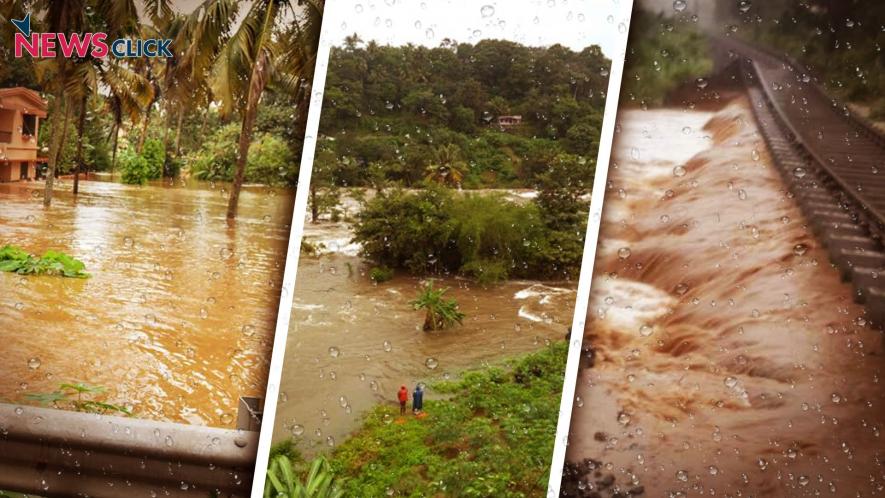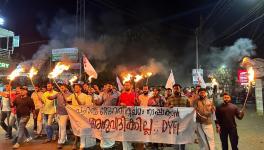Building New Kerala, Not Merely Restoring It

The state of Kerala has witnessed one of the worst floods of the century. The impact of climate change is very vivid, which is called a 1-in-1000-year inundation, in which the state received 50 per cent more rainfall than normal, with districts like Idukki receiving 95 per cent more rain than the average for the previous years. Climate change reveals that this phenomenon of 1-in-1000-year inundation will occur more frequently. In fact, the Intergovernmental Panel on Climate Change (IPCC) had predicted the change of floods of 100 years of cycles to 4-5 years. More than 50 per cent of the people exposed to flooding are in Asia. There is no other way but to adapt to the realities of climate change apart from building the environment all the more strongly for reducing the carbon gases in the atmosphere.
Kerala, a state which has a high rate of urbanisation, will have to evolve with the most resilient strategy that is more adapted to such events. There is another important impediment for Kerala and that pertains to 10 per cent of its total land mass being below the sea level. Hence, the risk of inundation has to be addressed in earnest.
The chief minister of Kerala Pinarayi Vijayan has, on more than one occasions, stated that the new model of development will not be to merely restore Kerala, but to build a new Kerala. How this model is built is for the future to tell. But, for sure, Kerala requires massive support not just in terms of resources, as more than Rs 25,000 crores is the estimated loss, but also in terms of the new scientific technologies to ensure that in future, if such a catastrophe happens, the adaptation of the people is quicker and the loss is minimal.
According to the science of the floods in Kerala, there are two primary reasons that need to be addressed to ensure that the flood management is made optimum. Whereas, there is no doubt that rainfall in the region was extremely high this year which can be termed as a cloudburst in the mountains. And, cloudbursts are bound to trigger landslides and heavy flooding. In Kerala, there were over 400 landslides that increased the vulnerability of the people.
The first area of intervention has to be the shift in the approach from mere management of the large reservoirs to the river basin approach. Actually, all the rainwater gets collected in the rivers which is then collected in the large dams. These large dams – more than 42 are in Kerala – are meant to control the floods, and not to trigger them. There has to be a strong integration of the Indian Meteorological Department with the dam management authorities for early warning systems and adequate forecasting. For example, the central water commission responsible for flood forecasting has no flood forecasting stations in Kerala’s river basins. In Kerala, it has to be more unique, as unlike other dams in the country which have large catchment areas, Kerala has a unique topography and very high human density. The river basin approach has to be very comprehensive with proper mapping of the floodplains and a completely integrated management. Once the people leave the relief camps and reach back to their homes, the state has to involve the best of the climatologists, ecologists, hydrologists, disaster experts, sociologists and other experts to draw a comprehensive plan of the integrated management.
The second area of intervention has to be the plan to manage the floodplains. To reinvent the planning process in Kerala vis-à-vis the flood plains. There is hardly any mapping, and Kerala direly requires a flood risk atlas. The dams that were built years ago hardly measured the flood risk inundation, and laid it on the map. These flood risk inundation maps must be taken back to the people and the risk should be explicitly explained to those who live in the flood plains. The zonation has to be to the micro level. Through this zonation, the land use plans must be revised, and these should not be restricted to just land use. Rather, there must be infrastructure plans which should contain water shed planning as an essential part. The old methods of just floor area ration (FAR) for planning must be revisited. Kerala, for sure, can show the country another beacon of light just as it has been able to act in the rescue operations, and has set an example.
But, who can prepare these plans? The state has its own capacity, no doubt about that! But, Kerala must get the best people from the world. The Dutch and the Scandinavians, who have a large land mass below sea level, have developed a method of resilient strategies and planning over a period which has minimised loss to their lives and property. I remember participating in a ‘World Water Week’ forum in Stockholm in Sweden. In one of our visits, we were taken to the backwater flood plains. All along the coast that had the highest vulnerability of floods, the city had developed a two-metre-high stone wall to ensure that the flood waters do not enter the city. Akin to Kerala, Sweden too has a very long coastline, and a large area which has an altitude of below sea level. The delegation that I led was amazed to see the integrated planning and the tools adopted to develop that. The plan was linked to the climate change realities. Green roofs and flood-controlling water plazas are some of the measures used to control the flood in their cities. The Kerala state government must develop a consultative group with the Dutch, as Netherlands has one of the most effective ways of handling the flooding of below-sea level land mass.
Kerala will have to design the infrastructure in the cities and floodplains in a creative manner to ensure that the damage is minimum in the future. For the immediate task, the high road density has to be restored which runs into lakhs of kilometres, as virtually every house is the state is linked with the road. The basic infrastructure needs to be built, but with certain modifications and argument specification.
There is a positive sign of rehabilitation. The state government and that too with a strong opinion-building amongst all sections, has decided to not to allow the people to resettle in the highly sensitive zones of landslides and floods. But, how their rehabilitation takes place to ensure that the model is inclusive is a serious challenge. The state requires lots of planning, and above all capital for that. The state government with all its resources and even with the ability of the diaspora is insufficient to meet the large demand of investments. The central government and the financial institutions will have to come forward to grant soft loans for the re-building of Kerala. The impact of climate change is not just geographical, and hence the aid and help should also not be restricted to the geographical boundaries of Kerala and India. Contributions from other nation states to rebuild Kerala is what should not be brushed aside.
Get the latest reports & analysis with people's perspective on Protests, movements & deep analytical videos, discussions of the current affairs in your Telegram app. Subscribe to NewsClick's Telegram channel & get Real-Time updates on stories, as they get published on our website.
























